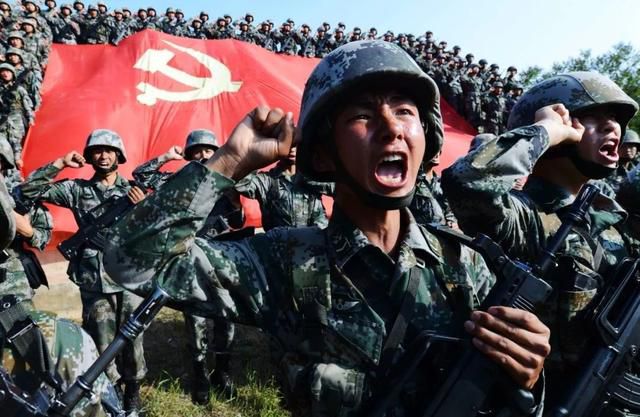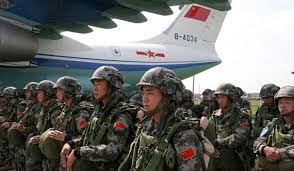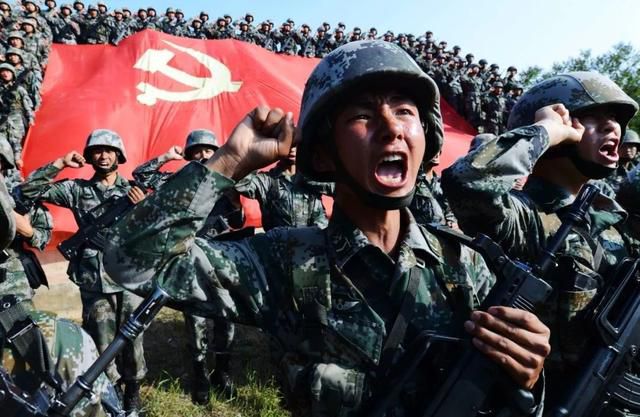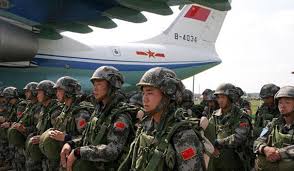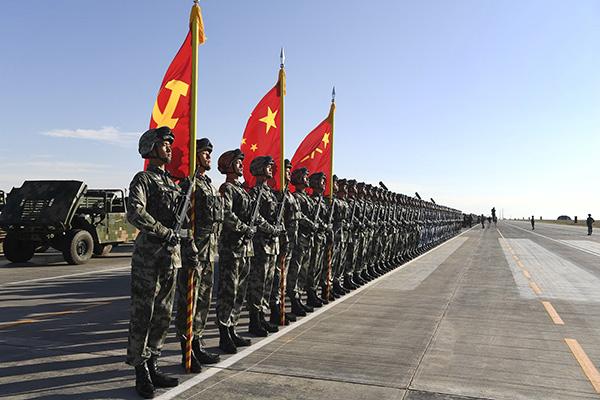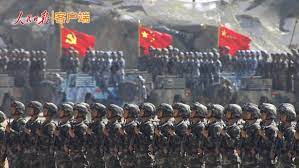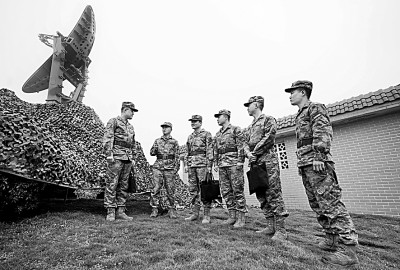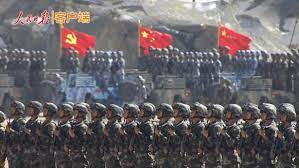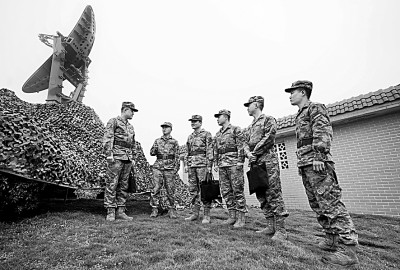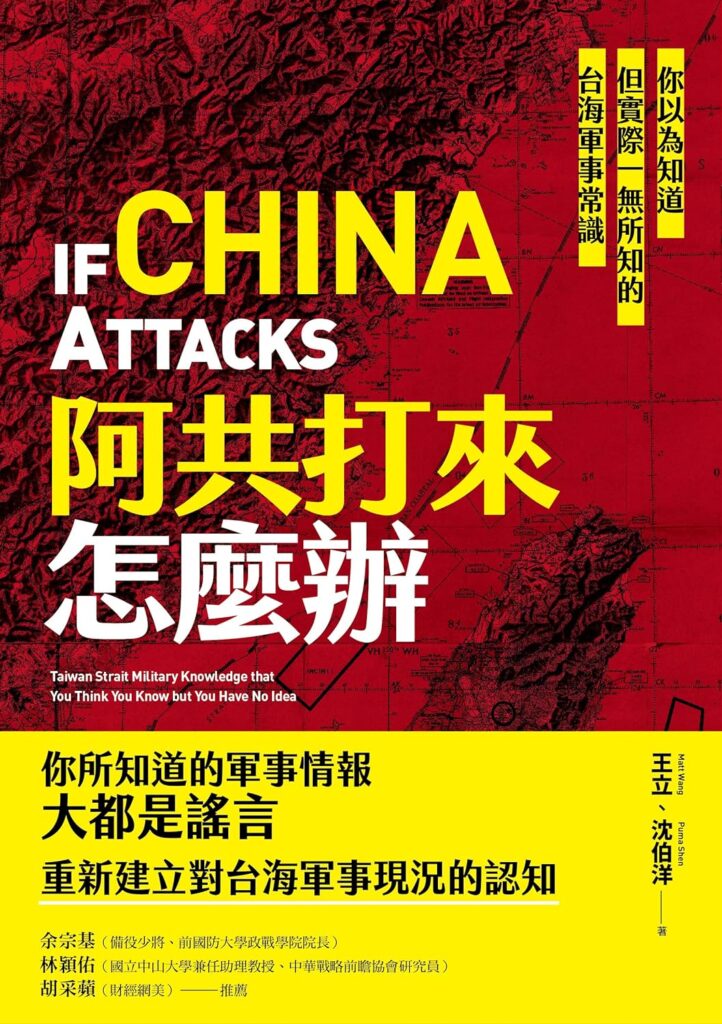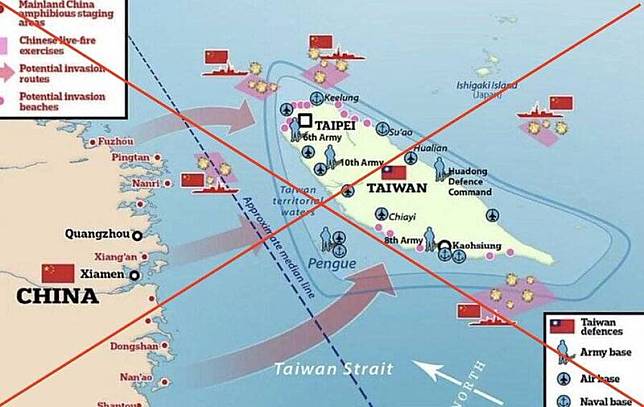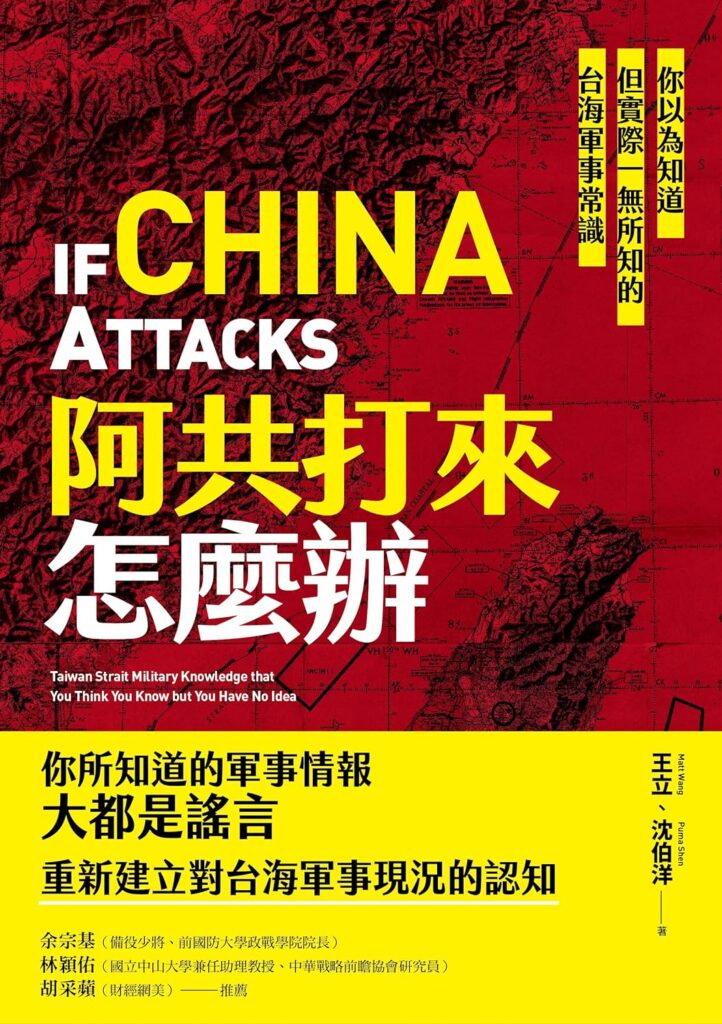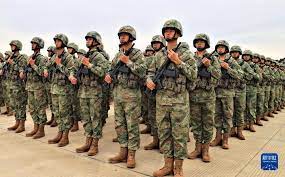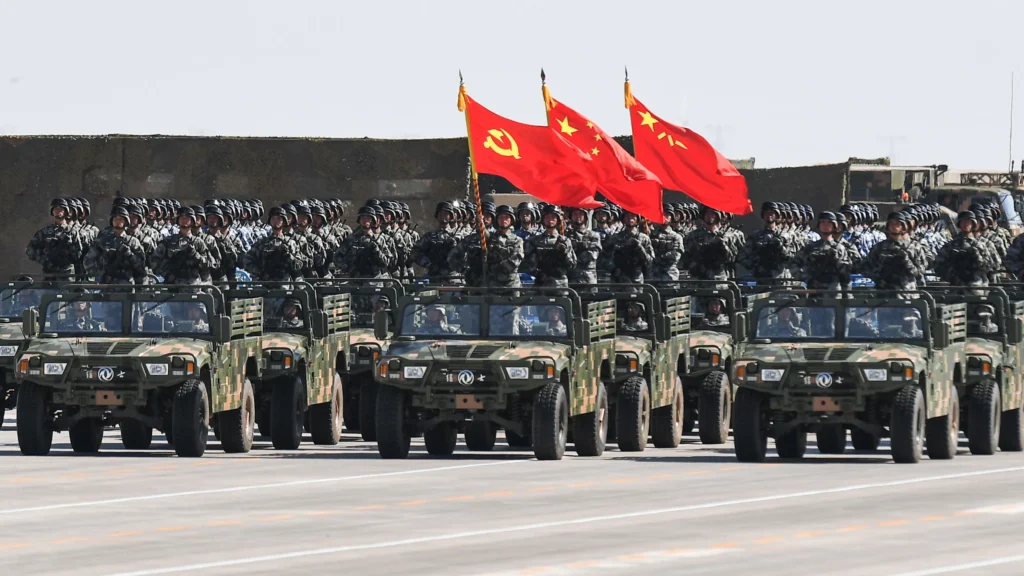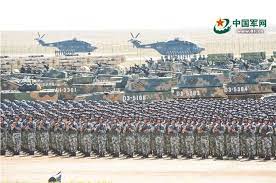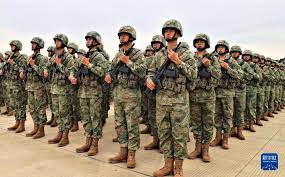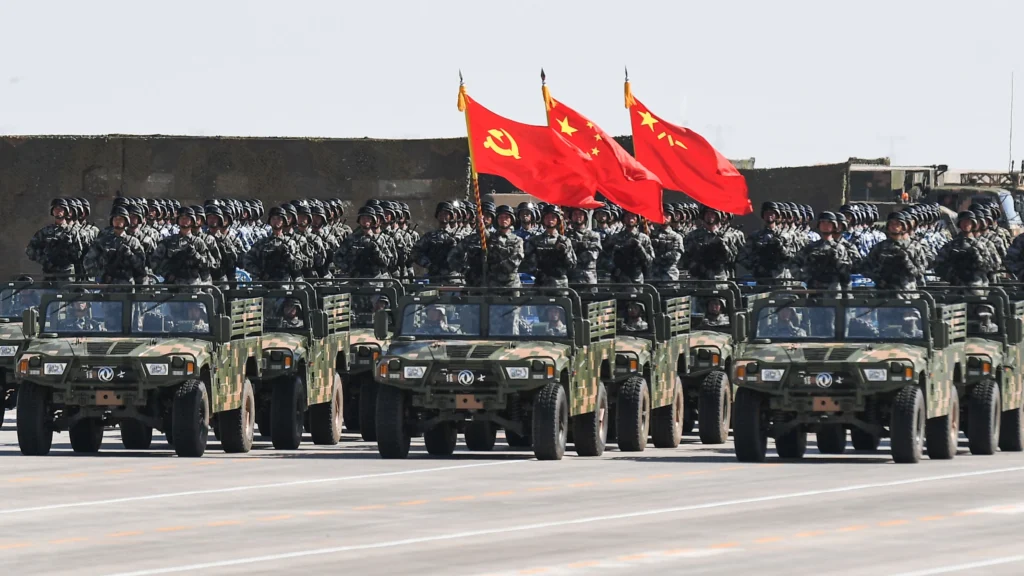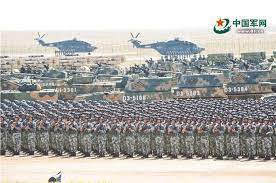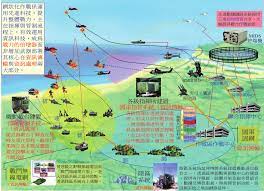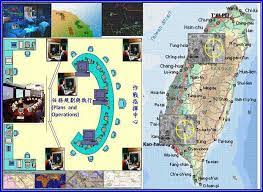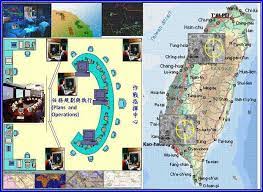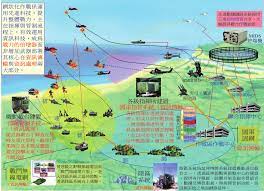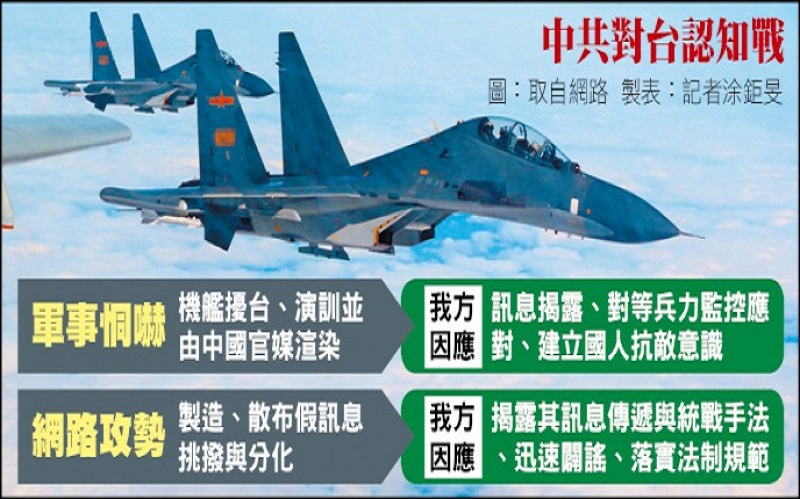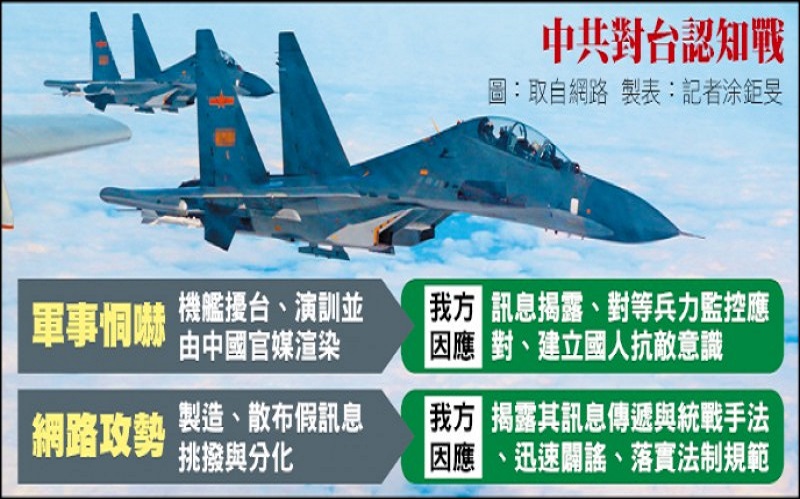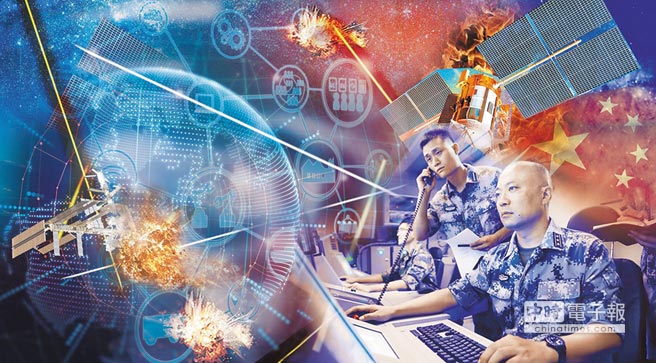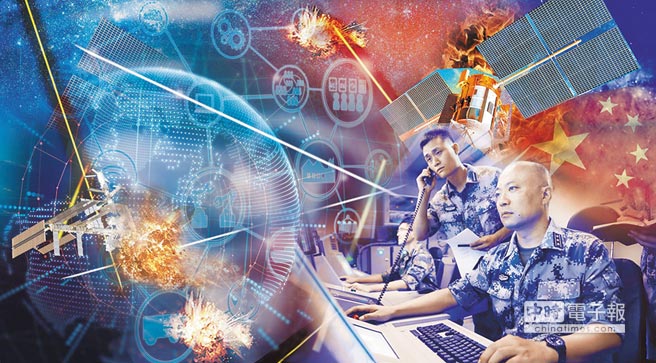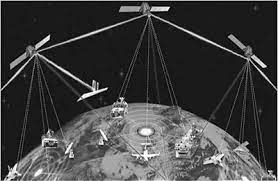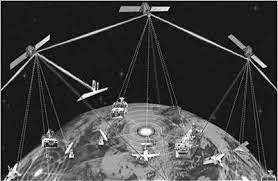中國人民解放軍探索認知域作戰制勝之道
外語音譯:
Judging from the latest local war practice, cognitive domain operations have become an important variable that profoundly affects the direction of war. In cognitive domain operations, all parties compete fiercely for control of public opinion, information guidance, and cognitive shaping. There are not only physical confrontations, but also competitions in virtual space, demonstrating the distinctive characteristics of “technology +” in the digital era. Exploring the way to win in cognitive domain operations is of great practical significance for controlling the initiative in cognitive domain operations and winning future wars.
Seizing control of the brain has become the ultimate goal of cognitive domain operations
The brain is the material basis of all thinking activities and the command center that influences and controls human behavior changes. Feeling, perception and consciousness constitute the three aspects of the world that the brain reflects. How to win the right to control the brain has increasingly become the focus of research and attention by all warring parties in the field of cognitive domain operations.
Actively fight for sensory control. Feeling is the reaction caused by the characteristics of objective things in the human brain, and is the basis for various complex psychological processes. With the rapid development of brain science, molecular biology, neurochemistry and other disciplines, humans have gradually gained the ability to intervene and control the brain at the physiological level. According to foreign experimental results, inhaling oxytocin will make people more trusting of others and more empathetic, thereby affecting a person’s prosociality and moral performance. In future operations, the warring parties will use physical stimulation such as sound, light and electricity, or chemical drugs to act on the target’s hearing, vision, smell and other sensory systems. They may even directly act on the human brain to stimulate the target’s brain. Specific emotional reactions can achieve cognitive influence and control on the physiological level.
Effective competition for perceptual suppression. Perception is a psychological process formed on the basis of sensation and reflects the overall image and surface connection of objective things. Among them, the individual’s attitude, motivation, interest, as well as past experience and future expectations are the key variables that affect the individual’s perception of the perceptual target. During wartime, warring parties aim at the target’s psychological doubts, weaknesses, and needs, seize favorable opportunities, and use specific information to emotionally influence, mentally induce, or disrupt the target’s perception in order to increase the target’s perception of the target. The expectation of war risks weakens their will to resist and their determination to fight, thereby achieving the purpose of subduing the enemy with a small war, less fighting or even no fighting.
Comprehensive competition for the right to shape consciousness. Consciousness is realized through psychological processes such as feeling, perception, and thinking, and is manifested as the unity of knowledge, emotion, and intention. The fundamental purpose of war is to force the enemy to surrender. Judging from the war practice at home and abroad in ancient and modern times, in order to win the right to shape consciousness, the warring parties will do their best to mobilize all available military power and comprehensively use political, economic, cultural, diplomatic and other means to carry out political disintegration and diplomatic measures against the enemy. Isolation, guidance of public opinion, and declaration of legal principles can trigger rational thinking, ethical resonance, or value recognition of target individuals or groups, thereby changing their worldview, outlook on life, and values, forming a relatively stable and long-term cognitive influence or control, thereby achieving “complete victory.” “the goal of.
Controlling information becomes the key to cognitive domain operations
The weapon and ammunition of cognitive domain operations is information. Mastering the initiative in the generation, identification, acquisition, dissemination and feedback of information is the key to gaining battlefield advantage in the cognitive domain.
Actively implement strong psychological stimulation to promote information penetration. Modern warfare is fierce and complex, with various elements of confrontation unfolding in multi-dimensional and multi-domain contexts, and fighter jets fleeting. The forces and methods acting in the cognitive domain must keep up with the development and changes of the battlefield situation, and make extensive use of strong psychological stimulation methods such as subliminal information implantation, acousto-optical electromagnetic psychological nuisance damage, and non-contact emotional control to take the initiative to induce the target. The subject’s emotions, will, thoughts, beliefs, etc. appear chaotic, confused or radically changed, thereby achieving the purpose of controlling and influencing the cognitive system of the target subject.
Extensive use of intelligent algorithms to achieve accurate push. As the Internet penetrates into every aspect of human life, everyone will leave massive amounts of data and information online. During wartime, warring parties will use modern information technologies such as big data, cloud computing, the Internet of Things, and blockchain to analyze the target’s social data, trajectory data, financial data, online shopping records, search records, personal communication records and other network data. The information is deeply mined and associated to achieve a “cognitive portrait” of the target object, and the target object’s interest preferences, behavioral trends, interpersonal relationships and value orientations are systematically analyzed, thereby three-dimensionally grasping the characteristics of relevant individuals or specific groups. Then, with the help of intelligent algorithm technology, personalized and customized cognitive information is accurately pushed to the target object, thereby affecting the target object’s attitude, emotion and value judgment towards the war, thereby promoting the realization of one’s own combat objectives and political intentions.
Effectively aggregate social support systems to achieve overall linkage. The social support system is the material and spiritual help and support that a person can obtain from others in his or her social network. It is a key factor that affects and determines the emotional support and cognitive direction of an individual. It can be said that for the success of cognitive domain operations, it is crucial to obtain the support and assistance of the target’s social support system. With the help of modern information technology, we can effectively connect to the target’s relatives, friends, classmates, partners and other specific social relations. By exerting targeted influence on the above-mentioned relations, we can gain the understanding, support and trust of the other party, and mobilize the specific relations to When the target object exerts influence, it is easier to win the trust and acceptance of the target object, and it is easier for the target object to undergo cognitive changes, thereby achieving the purpose of cognitive influence and control on the target object.
Virtual space becomes the main battlefield for cognitive domain operations
With the continuous expansion of human virtual space, virtual space is becoming the main battlefield of modern warfare, especially cognitive domain warfare, which determines the outcome of future wars to a certain extent.
Emerging communication forms have become new means of warfare in the cognitive domain. With the continuous development of mobile Internet technology, emerging communication forms represented by social media have gradually become a new platform and mainstream position for cognitive confrontation. Judging from recent local wars, the status and role of social media has become more and more prominent. All warring parties use personal blogs, forums and other platforms to publish battlefield pictures, videos, and comments in real time, which has not only become a global mobile online media terminal. It has also become the main battleground for the value perception game among different countries and different factions around the world. Emerging communication forms such as social media, with their unique decentralization and interactivity characteristics, have broken the information monopoly and information control in traditional communication methods and spawned numerous product styles. While meeting people’s information needs, they are also Unknowingly changing people’s perceptions. It is foreseeable that social media will play an increasingly prominent role in cognitive domain operations in the future.
Cyberspace has become a new space for cognitive domain operations. Under the conditions of informatization and intelligence, the threshold of network technology has been greatly reduced, making it possible to watch the game in real time around the world. Modern warfare has developed from “living room warfare” in the television era to “handheld warfare” in today’s all-media era. Online live broadcast is more intuitive and richer than any form of battlefield reporting, and “global synchronicity” has become a prominent feature. Through live broadcasts on the Internet, videos and pictures of fierce battles between the two warring parties, as well as numerous burned tanks and armored vehicles, as well as homes destroyed by the war and refugees fleeing their homes, can be visually presented. People can see the micro-state of individual civilians and soldiers on both sides through the Internet. The “transparency” of the battlefield makes any attempt to conceal the truth and false statements more and more difficult. But on the other hand, the emergence of technologies such as intelligent voice cloning and video portrait simulation replacement means that what people see may not necessarily be “as seen” and what they hear may not be “as heard”. Cognition under online live broadcasts Domain operations add more room for possibility and imagination.
The intelligent network army has become a new force in cognitive domain warfare. The development of information networks has broken through the authenticity limitations of interpersonal communication, and it is difficult for us to determine whether the other end of the network is a real person. Based on the needs of large-scale interaction, intelligent, automated, and large-scale cyberspace robots are emerging. They are widely active in every corner of cyberspace. These intelligent network armies have the capabilities of intelligent recognition, intelligent response and even brain-like thinking. They are tireless and work around the clock. Intelligent network armies are becoming an important force in future cognitive domain operations. Judging from the current development trends of related technologies, major countries and even business organizations in the world are focusing on the potential prospects of network robots in group penetration, live broadcast follow-up, shaping public opinion, and managing network crises. In the flexible guidance of network intelligent robots, Increase research and development efforts on key technologies such as automatic acquisition of technology groups, automatic cultivation and group penetration, and provide intelligent and efficient technical support for public opinion guidance, cognitive shaping, and behavioral guidance and control by discovering and effectively utilizing the behavioral patterns of network users.
中國人民解放軍探索認知域作戰制勝之道
原始繁體中文:
從最新的局部戰爭實踐來看,認知域作戰已成為深刻影響戰爭走向的重要變因。 在認知域作戰中,各方對輿論控制、資訊引導、認知塑造等方面展開激烈競爭。 不僅有實體對抗,還有虛擬空間的較量,展現出數位時代「科技+」的鮮明特質。 探索認知域作戰的致勝之道,對於掌控認知域作戰主動權、贏得未來戰爭具有重要的現實意義。
奪取大腦控制權成為認知域作戰的終極目標
大腦是一切思考活動的物質基礎,是影響和控制人類行為改變的指揮中心。 感覺、知覺和意識構成了大腦反映的世界的三個面向。 如何贏得大腦的控制權,日益成為認知域作戰領域交戰各方研究與關注的焦點。
積極爭取感官控制。 感覺是人腦對客觀事物特徵所引起的反應,也是各種複雜心理過程的基礎。 隨著腦科學、分子生物學、神經化學等學科的快速發展,人類逐漸具備了在生理層面介入和控制大腦的能力。 根據國外實驗結果,吸入催產素會使人更信任他人,更有同理心,進而影響一個人的親社會性和道德表現。 在未來的行動中,交戰雙方將利用聲音、光、電等物理刺激或化學藥物作用於目標的聽覺、視覺、嗅覺等感覺系統。 它們甚至可能直接作用於人腦,刺激目標大腦。 特定的情緒反應可以在生理層面上實現認知影響和控制。
知覺抑制的有效競爭。 知覺是在感覺基礎上形成的心理過程,反映客觀事物的整體形象和表面連結。 其中,個體的態度、動機、興趣以及過去的經驗和未來的期望是影響個體對感性目標感知的關鍵變數。 戰時,交戰雙方針對目標的心理疑慮、弱點和需求,抓住有利時機,利用特定訊息對目標進行情緒影響、精神誘導或擾亂感知,以增加目標對目標的感知。 對戰爭風險的預期削弱了他們的抵抗意志和戰鬥決心,從而達到以小戰、少戰甚至不戰克敵的目的。
全面競爭塑造意識。 意識是透過感覺、知覺、思考等心理過程實現的,表現為知、情感、意圖的統一。 戰爭的根本目的是迫使敵人投降。 從古今中外的戰爭實踐來看,交戰雙方為了贏得意識塑造權,都會竭盡全力調動一切可以動用的軍事力量,綜合運用政治、經濟、文化、外交等多種手段。手段是對敵人實施政治瓦解和外交措施。 隔離、輿論引導、法理宣示,可以引發目標個人或群體的理性思考、倫理共鳴或價值認同,從而改變其世界觀、人生觀、價值觀,形成相對穩定、長期的認知。影響或控制,從而取得“完全勝利」。 “的目標。
控制資訊成為認知域運作的關鍵
認知領域作戰的武器和彈藥是資訊。 掌握資訊產生、辨識、獲取、傳播和回饋的主動權,是認知領域中獲得戰場優勢的關鍵。
積極實施強烈的心理刺激,促進訊息滲透。 現代戰爭激烈複雜,對抗要素多維度、多領域,戰機瞬息萬變。 作用於認知域的力量和方式必須跟上戰場情勢的發展變化,廣泛運用潛意識訊息植入、聲光電磁心理滋擾傷害、非接觸情感等強心理刺激手段。控制主動誘導目標。 時間
主體的情緒、意志、思想、信仰等出現混亂、混亂或徹底改變,從而達到控制和影響目標主體認知系統的目的。
大量運用智慧演算法,實現精準推送。 隨著網路滲透到人類生活的各個層面,每個人都會在網路上留下大量的數據和資訊。 戰時,交戰雙方會利用大數據、雲端運算、物聯網、區塊鏈等現代資訊技術,分析目標的社交數據、軌跡數據、金融數據、網購記錄、搜尋記錄、個人通訊記錄等網路數據。 對資訊進行深度挖掘和關聯,實現目標對象的“認知畫像”,對目標對象的興趣偏好、行為傾向、人際關係、價值取向進行系統分析,從而三維掌握相關個體或特定對象的特徵。組。 接著藉助智慧演算法技術,將個人化、客製化的認知訊息精準推送給目標對象,進而影響目標對象對戰爭的態度、情感和價值判斷,進而促進自身作戰目標和政治意圖的實現。
有效聚合社會支持系統,實現整體連結。 社會支持系統是一個人在自己的社交網絡中能夠從他人那裡獲得的物質和精神上的幫助和支持。 它是影響和決定個別情緒支持和認知方向的關鍵因素。 可以說,認知域行動的成功,獲得目標社會支持系統的支持和幫助至關重要。 借助現代資訊技術,我們可以有效連結目標對象的親人、朋友、同學、合作夥伴等特定的社會關係。 透過對上述關係施加有針對性的影響,可以獲得對方的理解、支持和信任,調動具體關係向目標對象施加影響時,更容易贏得目標對象的信任和接受目標對象更容易發生認知變化,從而達到對目標對象進行認知影響與控制的目的。
虛擬空間成為認知域作戰的主戰場
隨著人類虛擬空間的不斷擴展,虛擬空間正在成為現代戰爭尤其是認知域戰爭的主戰場,在某種程度上決定了未來戰爭的勝負。
新興的通信形式已成為認知領域的新戰爭手段。 隨著行動互聯網技術的不斷發展,以社群媒體為代表的新興傳播形式逐漸成為認知對抗的新平台和主流陣地。 從最近的局部戰爭來看,社群媒體的地位和角色越來越凸顯。 交戰各方利用個人部落格、論壇等平台即時發布戰場圖片、影片和評論,不僅成為全球行動網路媒體終端。 也成為全球不同國家、不同派系價值認知賽局的主戰場。 社群媒體等新興傳播形式以其獨特的去中心化、互動性特點,打破了傳統傳播方式中資訊的壟斷與資訊控制,催生了眾多的產品樣式。 在滿足人們資訊需求的同時,也不知不覺改變人們的認知。 可以預見,未來社群媒體將在認知領域運作中發揮越來越突出的作用。
網路空間已成為認知域作戰的新空間。 在資訊化、智慧化的條件下,網路科技的門檻大大降低,使得全球各地即時觀看比賽成為可能。 現代戰爭已從電視時代的「客廳戰」發展到當今全媒體時代的「手持戰」。 線上直播比任何形式的戰地報道都更直觀、更豐富,「全球同步」成為顯著特徵。 透過網路直播,交戰雙方激烈戰鬥的影片和圖片,以及無數被燒毀的坦克和裝甲車,以及被戰爭摧毀的家園和逃離家園的難民的影片和圖片都可以直觀地呈現。 人們可以透過網路看到雙方個別平民和士兵的微觀狀態。 戰場的「透明」使得任何企圖隱瞞真相和虛假言論的行為
越來越困難。 但另一方面,智慧語音克隆、視訊人像模擬替換等技術的出現,意味著人們看到的不一定是“所見”,聽到的也不一定是“所聞”。 線上直播下的認知領域運作增加了更多可能性和想像空間。
智慧網路軍隊已成為認知域戰爭的生力軍。 資訊網路的發展突破了人際互動的真實性限制,我們很難判斷網路的另一端是否是真人。 基於大規模互動的需求,智慧化、自動化、大規模的網路空間機器人不斷湧現。 他們廣泛活躍在網路空間的各個角落。 這些智慧網路軍隊具備智慧辨識、智慧響應甚至類腦思維的能力。 他們不知疲倦,日夜不停地工作。 智慧網路軍隊正成為未來認知域作戰的重要力量。 從目前相關技術的發展趨勢來看,全球主要國家甚至商業組織都在關注網路機器人在群體滲透、直播跟進、輿論塑造、網路危機管理等方面的潛在前景。 在網路智慧機器人彈性引導方面,加大科技群自動取得、自動培育、群體滲透等關鍵技術的研發力度,為輿情引導、認知塑造、行為引導等提供智慧高效的技術支援。透過發現並有效運用網路使用者的行為模式進行控制。
中國原創軍事資源及作者:http://www.81.cn/jfjbmap/content/2022-09/01/content_323888.htm
孫志友 孫海濤
